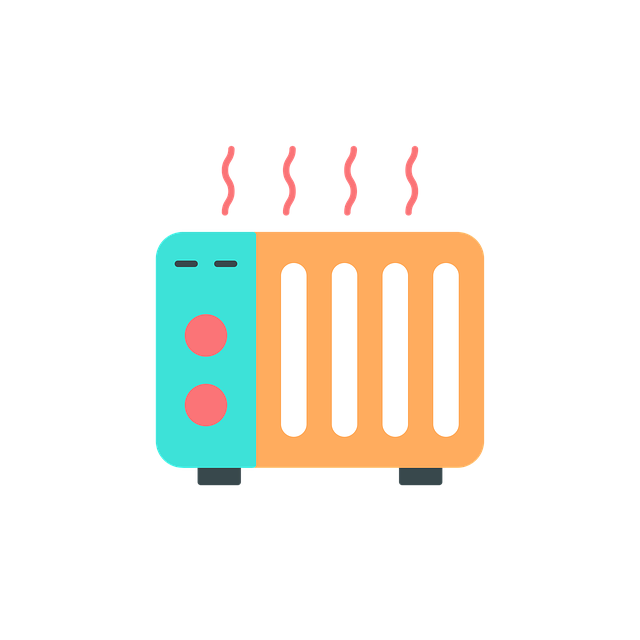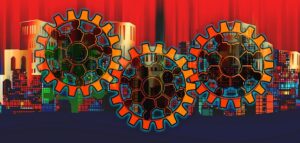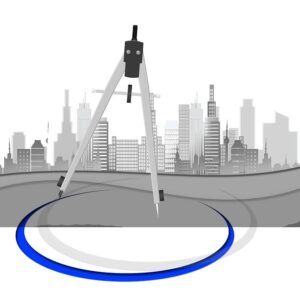Thermal stratification, the separation of hot and cold air leading to uneven temperatures in industrial facilities, causes energy inefficiencies and higher operational costs. Industrial destratification fans, designed for large-scale applications, efficiently mix air throughout spaces, eliminating temperature variations and enhancing worker comfort while offering significant energy savings. These high-velocity fans are a game-changer, breaking up thermal stratification in high ceiling spaces, improving air circulation, and reducing energy costs. Their application extends to scenarios involving hazardous materials, promoting safety and productivity. Future innovations include smart sensors, advanced control systems, and energy-efficient components, further enhancing their efficiency and sustainability.
In many industrial settings, air stratification—the separation of warm and cool air currents—can hinder productivity. High-velocity industrial destratification fans are revolutionizing these environments by maximizing air mixing efficiency. This article explores the fundamentals of air stratification, delves into the transformative power of high-velocity fans, highlights key features and benefits, discusses diverse applications, and peers into future trends shaping next-generation destratification technology. Uncover how these fans are becoming indispensable tools in modern industry through improved environmental control and enhanced operational effectiveness.
- Understanding Destratification: The Basics of Air Stratification in Industries
- High-Velocity Fans: A Game Changer in Efficient Air Mixing
- Key Features and Benefits of Industrial Destratification Fans
- Applications: Where are Destratification Fans Making a Difference?
- Future Trends: Innovations Shaping the Next Generation of Destratification Technology
Understanding Destratification: The Basics of Air Stratification in Industries

In industrial facilities, manufacturing plants, and even in vast warehouses, air stratification is a common challenge. Thermal stratification control refers to the process of distributing heat evenly throughout a large space, ensuring optimal worker comfort and energy efficiency. In many cases, especially in high ceiling spaces like factories or heavy duty construction sites, hot and cold air tends to separate, creating layers of different temperatures. This phenomenon, known as thermal stratification, can significantly impact the overall environment, leading to inefficiencies in factory cooling and even increasing energy cost reduction efforts.
To tackle this issue, industrial destratification fans are increasingly becoming essential tools. These high-velocity fans are designed for warehouse applications and can efficiently mix air throughout large spaces, eliminating hot spots and cold zones. By promoting uniform air circulation, these industrial destratification fans not only improve worker comfort but also offer substantial benefits in terms of energy savings, making them a game-changer in manufacturing plants and heavy duty construction sites alike.
High-Velocity Fans: A Game Changer in Efficient Air Mixing

In today’s competitive industrial landscape, efficient air mixing is paramount for optimizing performance in various settings, from manufacturing plants to large warehouse applications. High-velocity industrial destratification fans emerge as a game-changer in this domain. These powerful tools are designed to break up thermal stratification, ensuring uniform distribution of temperature and air quality throughout even the highest ceiling spaces in heavy duty construction projects.
By employing advanced technology, high-velocity fans significantly enhance large space air circulation, addressing the persistent issue of thermal stratification control in industrial facilities. This not only results in improved worker comfort but also plays a crucial role in energy cost reduction by minimizing the need for excessive cooling measures. The efficiency gains are substantial, making these destratification fans an essential asset for maximizing productivity and sustainability in factory cooling scenarios.
Key Features and Benefits of Industrial Destratification Fans

Industrial destratification fans are engineered to revolutionize the way industrial facilities manage air circulation and worker comfort. These high-performance ventilation systems tackle thermal stratification, a common issue in large spaces like manufacturing plants and warehouses, where hot air rises to the ceiling while colder air stays near the floor. This creates uneven temperature distributions and can significantly impact productivity and energy costs.
Key features of destratification fans include powerful motor drives, advanced blade designs, and adjustable speed controls. These fans are designed for heavy-duty construction and can handle high ceiling spaces efficiently. By promoting thorough air mixing and uniform temperature distribution, they help in achieving optimal factory cooling, reducing energy consumption, and enhancing worker comfort throughout the facility, regardless of the season or external weather conditions.
Applications: Where are Destratification Fans Making a Difference?

Industrial destratification fans are making a significant impact in various sectors where efficient air mixing and thermal stratification control are essential. These high-velocity fans are particularly useful in industrial facilities and manufacturing plants, addressing the challenges of maintaining optimal worker comfort and energy cost reduction. In large spaces like warehouses, factories, and even heavy duty construction sites with high ceiling spaces, destratification fans play a crucial role in enhancing air circulation, eliminating hot spots, and ensuring a more uniform temperature distribution.
Their application goes beyond factory cooling; they are also beneficial in scenarios demanding thorough air mixing, such as when dealing with volatile organic compounds (VOCs) or other hazardous materials. By reducing thermal stratification, these fans contribute to improved worker safety and productivity, making them indispensable tools for modern industrial facilities aiming to optimize their operations while promoting a healthier work environment.
Future Trends: Innovations Shaping the Next Generation of Destratification Technology

The future of industrial destratification fans is poised for significant advancements, driven by technological innovations and a growing focus on sustainability. Researchers and manufacturers are exploring new ways to enhance air mixing efficiency, aiming to create next-generation equipment that surpasses current capabilities. One prominent trend involves integrating smart sensors and advanced control systems into destratification fans. These technologies enable precise monitoring of air quality, temperature, and stratification levels, allowing for real-time adjustments to fan speed and direction. This not only optimizes energy usage but also ensures optimal worker comfort across vast warehouse applications and high-ceiling spaces in manufacturing plants.
Additionally, the development of more powerful yet energy-efficient motors and blades will be crucial. Heavy-duty construction and innovative materials will contribute to longer fan lifespans, reducing maintenance costs and downtime in demanding environments. As industrial facilities strive for greater energy cost reduction, these advancements promise to play a pivotal role in achieving sustainable factory cooling while maintaining optimal air circulation in large spaces.
Industrial destratification fans have emerged as a powerful tool for maximizing air mixing efficiency in various industries. By understanding the basics of air stratification and leveraging high-velocity fan technology, these devices offer significant benefits such as improved environmental control, enhanced safety, and increased productivity. As innovation continues to shape the future of destratification technology, it’s clear that industrial destratification fans will remain indispensable for navigating complex air mixing challenges across diverse applications.






